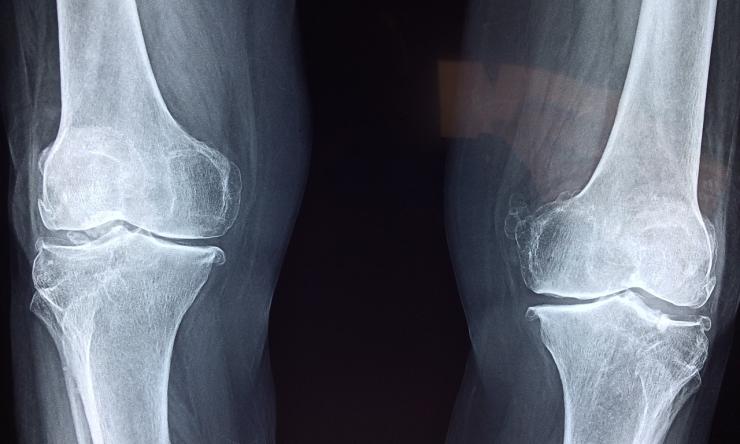Mutated bone stem cells caught in a loop leading to osteogenesis imperfecta type V
A study conducted by researchers at Baylor College of Medicine and collaborating institutions reveals the molecular events leading to osteogenesis imperfecta type V, a form of brittle bone disease caused by a mutation in the gene IFITM5.
The mutation blocks the normal development of bone stem cells into mature cells, which would form healthy bones. Instead, the mutation leads to the formation of bones that are extremely brittle. Children with this disorder have recurrent fractures, bone deformities, chronic pain and other complications. The findings, published in The Journal of Clinical Investigation, offer new possibilities to design therapies for this yet untreatable condition.
“Brittle bone diseases, also known as osteogenesis imperfecta (OI), are a group of rare diseases that affect the connective tissue – tissues like bones, which support and protect other tissues in the body,” said Dr. Brendan Lee, professor, chair and Robert and Janice McNair Endowed Chair of molecular and human genetics at Baylor. He also is a member of Baylor’s Dan L Duncan Comprehensive Cancer Center and part of Texas Children’s Hospital. “Most types of OIs are caused by gene mutations that disrupt collagen synthesis or processing, but not OI type V.”
“OI type V is unique because all patients have the exact same mutation in the IFITM5 gene linked to the condition,” said first author of the work, Dr. Ronit Marom, assistant professor of molecular and human genetics at Baylor and Texas Children’s. “This mutation results in the production of a longer IFITM5 protein; however, the biological function of this protein in bone and why this mutation results in OI were not well understood.”
The researchers developed an animal model of OI type V by genetically engineering mice to express the mutant gene during certain stages of bone development. The genetically modified mice recapitulated most of the characteristics of the human condition, enabling the analysis of the underlying molecular mechanisms.
The team discovered that the IFITM5 mutation acts at the level of bone stem cells, altering the normal process that leads to bone formation. “Bone stem cells lead the way in the formation of the skeleton during development and in bone healing after a fracture – first, they give rise to cartilage, which then turns into bone,” Lee said.
The Ifitm5 mutation in mice disrupts this process. Instead of progressing from cartilage to bone, progenitor cells form overgrown cartilage calluses where new bone should be.
“Our findings help explain what we see in patients with OI type V. They not only have bones that break easily, but when stem cells attempt to heal them, they form large calluses of cartilage instead of bone,” Lee said. “It’s like the stem cells do not finish the job, they get caught in a loop to preferably form cartilage, instead of maturing into bone.”
“Until now, we considered OI to be the result of abnormal bone development. It was exciting to discover that OI type V is in fact the result of abnormal differentiation of a common stem cell, which leads to imbalance in both cartilage and bone development,” Marom said.
The team also identified two major molecular players driving this bone maturation defect. “The ERK/MAP kinase signaling pathway and the transcription factor SOX9 were both significantly increased,” Marom said. “Interestingly, when we inactivated either ERK/MAP kinase signaling or SOX9 with pharmacologic or genetic approaches, we were able to restore normal bone development in mutant models. These findings not only inform on the mechanism of OI type V, they also will facilitate the development of future therapies for this condition.”
“In addition, the fact that all the patients with OI type V have the same IFITM5 mutation could prove to be an advantage for genetic therapies directed at the mutated gene,” Lee said. “One gene therapy designed to treat the IFITM5 mutation would work for all the patients.”
This study is another example of the value of rare disease studies to improve the understanding and treatment of common diseases. “Understanding how OI type V happens provides new insight into similar but more common skeletal conditions, such as osteoporosis, and also could result in improved treatments,” Lee said.
For a complete list of the authors, their affiliations and financial support for the study, see the publication.










